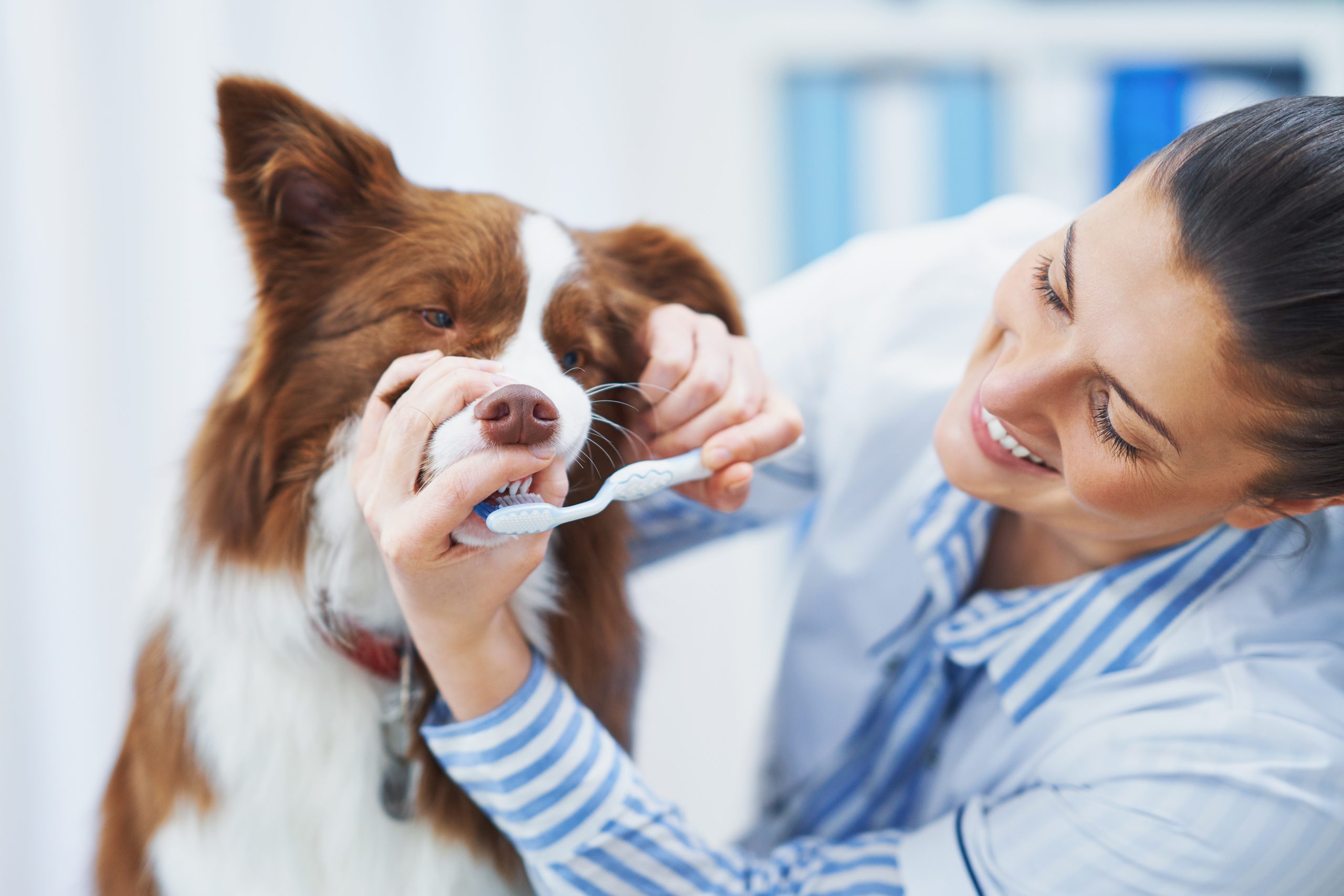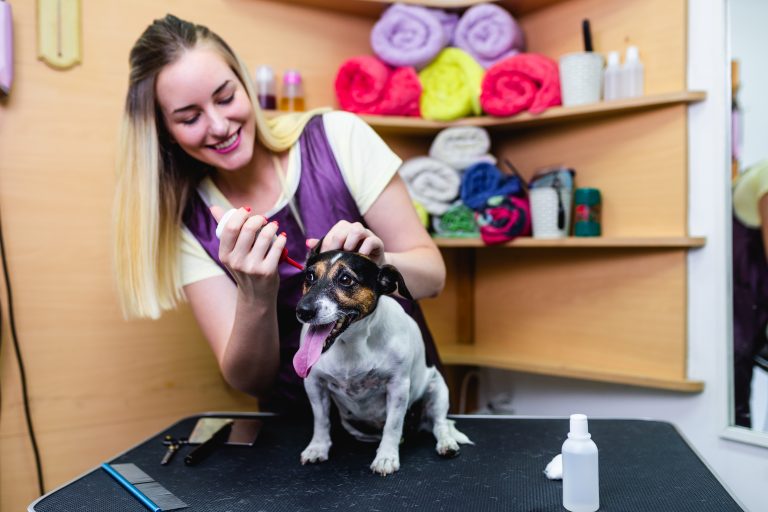3 Reasons Why Your Pet’s Dental Cleaning Is Necessary
Although dental cleaning for your pet may seem to be an extra cost, dogs and cats, like people, may acquire gum disease. We may scrub our teeth twice a day to remove tartar that forms on our teeth from food, but few pet owners do the same for their dogs. Tartar may solidify into plaque, leading to periodontal disease, which causes discomfort, gum erosion, infections, and even tooth loss if left untreated. It’s essential to monitor your pet’s oral health, and frequent dental cleanings are one of the most effective methods to do so. Check out these three reasons why your pet’s teeth need to be cleaned!
Dental cleanings help to keep teeth from falling out
Periodontal disease causes the supporting tissues behind the teeth to become spongy and degrade over time, leaving teeth without a secure foundation. This may eventually result in abscesses, loose teeth, and tooth loss. When teeth fall out, they leave behind harmful tissue that might spread to neighboring teeth.
Because of improper occlusion, missing teeth produce gaps that make chewing difficult. Because the remaining teeth may move, creating more significant gaps, the ability to bite and chew may be harmed. Objects such as twigs or food may get stuck between teeth, causing pain and bleeding. Gum infections and cavities may be caused by organic substances trapped against the gums.
Particles of artificial fur, threads, and other pieces might get lodged in your dog or cat’s jaws, creating discomfort. Dental cleaning allows the veterinarian to thoroughly check the pet’s mouth for issues and treat them promptly to avoid future tooth loss.
Dental cleanings help to relieve discomfort
While most dogs will avoid your contact when they’re in discomfort, others might get used to the persistent agony and refuse to exhibit it. Plus, since animals conceal their suffering to avoid becoming easy prey for predators, it might be challenging to detect whether your dog or cat is in agony. To see oral discomfort in your pet, look for subtle indicators such atypical chewing, drooling, dropping food, decreased appetite, unwillingness to eat, or a preference for soft food over complex, dry meals.
Periodontal disease causes aching gums, loosened teeth, abscesses, and infections in dogs and cats. Tumors, cysts, cuts from sharp objects or hard food, and ulcers are all possible causes of mouth discomfort in dogs. Most of these are invisible to the pet parent and are only noticed after a cleaning. A thorough dental cleaning addresses the problems that cause discomfort and helps to avoid the development of numerous disorders in the first place. After a dental cleaning, many dogs become more active and playful, living pain-free.
Dental cleanings are beneficial to one’s health and lifespan
When periodontal disease is left untreated, bacteria enters the circulation and travels to the body’s other organs, possibly inflicting lasting harm. The acute and chronic illness results may substantially impact your pet’s quality of life and lifespan. Nephritis, or kidney infection, may lead to renal insufficiency or the organ’s complete shutdown.
Dialysis or transplantation would be the next step for humans, but only big metropolitan veterinary clinics are likely to provide these services to their pet patients. Pericarditis is a condition in which the tissue around the heart becomes inflamed. The condition causes enormous amounts of fluid to accumulate around the heart, impairing its ability to pump and transport blood throughout the body.
Hepatic inflammation, for example, might impair the liver’s capacity to filter poisons from the bloodstream, resulting in sepsis. The liver is required for survival, and although human liver transplants are accessible, these life-saving treatments are uncommon in dogs.
During a dental cleaning, what happens?
Dental cleanings are done under an anesthetic so that the pet is motionless and comfortable throughout the procedure. This enables for a complete examination and cleaning. It is difficult and unsafe to attempt a comprehensive cleaning without an anesthetic. To remove tartar and plaque, ultrasonic and hand scalers penetrate deep behind the gums.
After the plaque has been removed, the teeth are polished to eliminate any minute scratches on the enamel caused by the scale equipment. Any further procedures, including extractions, will be performed while the puppy is still sedated. The vet may administer specific treatments immediately after the tooth cleaning to prevent infection and decrease new plaque. A fluoride wash, an antibiotic solution, and cleaning agents are examples.
These treatments reduce tooth sensitivity, reinforce enamel, and cure bacterial infection leftovers. Broken teeth, abscesses, oral cysts or tumors, malocclusion (teeth do not line up correctly), a damaged jaw, and palate deformities are just a few of the dental issues that may be identified during a comprehensive dental cleaning, and many of them can be treated during the cleaning.
What am I supposed to do in between cleanings?
Plaque starts to build on your pet’s teeth as soon as six hours after a dental cleaning. As a result, it’s critical to maintain the excellent oral hygiene that started in the veterinary clinic. If feasible, brushing your pet’s teeth regularly is the most effective approach to achieve this. There are devices on the market that may help with this often arduous task, such as “finger brushes” and tasty pet toothpaste.
Special dental foods, dental snacks, and enzyme solutions that you may sprinkle into your pet’s water are some more things that can help keep teeth clean. As beneficial as these products are, a comprehensive dental cleaning once a year is the gold standard for preventing and treating dental issues in your cat. While inspecting your pet’s mouth, keep an eye out for symptoms that your puppy or cat is experiencing problems, such as the following:
- Teeth that are broken or loose
- Extra tooth or baby teeth that haven’t dropped out
- Teeth that are discolored
- Bleeding from the mouth is a common occurrence.
- Swelling in the mouth’s surrounding parts
Veterinary preventative care is costly, and most pet insurance policies do not cover regular dental examinations and cleanings. Within 24 hours, wellness packages may cover up to 100% of the cost of regular checkups and diagnostic testing. Look through our wellness programs to see which is best for your pet and your budget.



